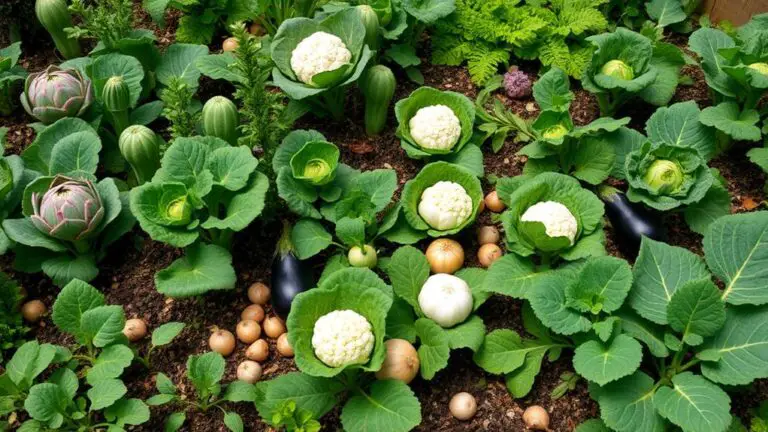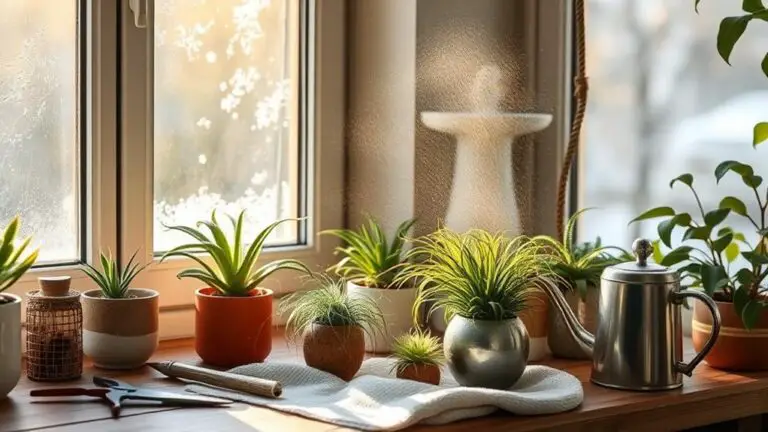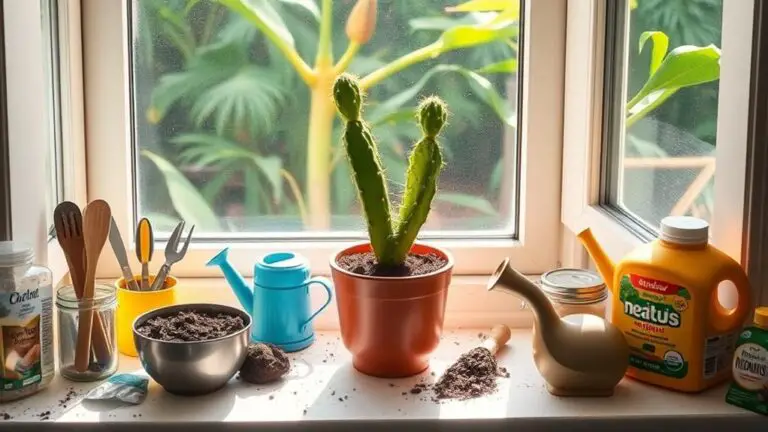5 Essential Tips for Stunning Succulent Photography
If you're aiming to elevate your succulent photography, understanding your subject is key. Succulents have unique adaptations and blooming cycles that can inspire creative compositions, but how do you capture these moments effectively? Picking the right gear, like a 100mm macro lens, and mastering the rule of thirds can make a significant difference. Ideal lighting, especially during golden hours, guarantees your photos stand out. Finally, engaging with the photography community can provide invaluable tips and inspiration. But what are the detailed steps to achieve this? Let's explore further.
Understand Your Subject
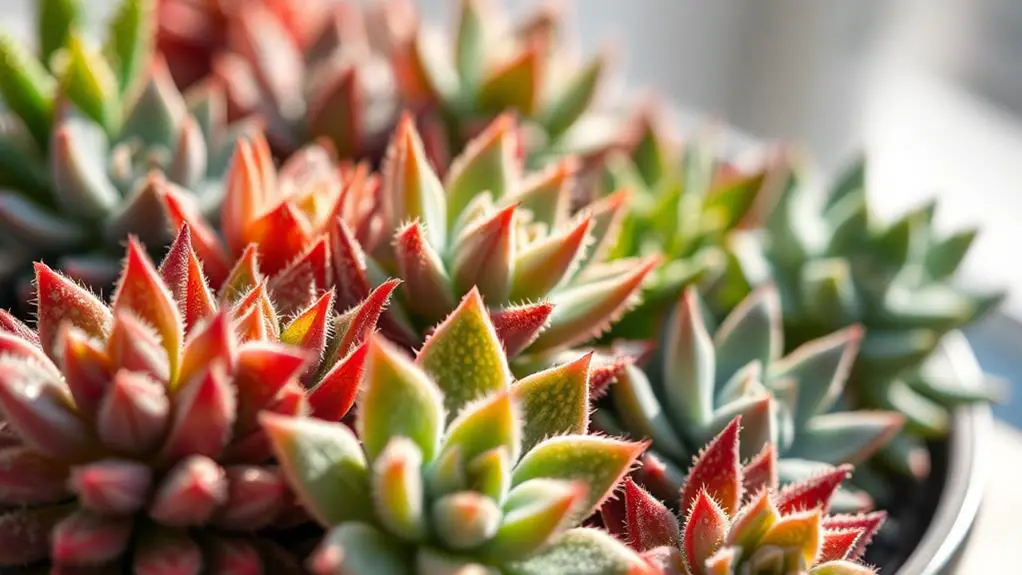
When you understand your subject, you'll find photographing succulents becomes a lot more rewarding. Knowing about their unique adaptations, like shallow roots and waxy coatings, can enhance your approach. By recognizing these features, you can better appreciate and capture their beauty in natural habitats.
Familiarizing yourself with succulents' blooming cycles is essential. Some flowers only last a day, so plan strategically to snap these fleeting moments. Macro photography is perfect for this, allowing you to highlight delicate details and ephemeral blooms.
Pay close attention to geometric patterns and textures in the leaves. These features can inspire creative compositions, making your photos stand out.
Observing how light plays on succulent surfaces gives your photos a dynamic edge. Notice how different times of day change the look of your subject. This can help you experiment with depth of field, adding more dimension to your shots.
Engaging with seasonal changes is also vital. After rain, succulents display vibrant colors and contrasting textures, which can be striking in photographs.
Pick the Right Gear
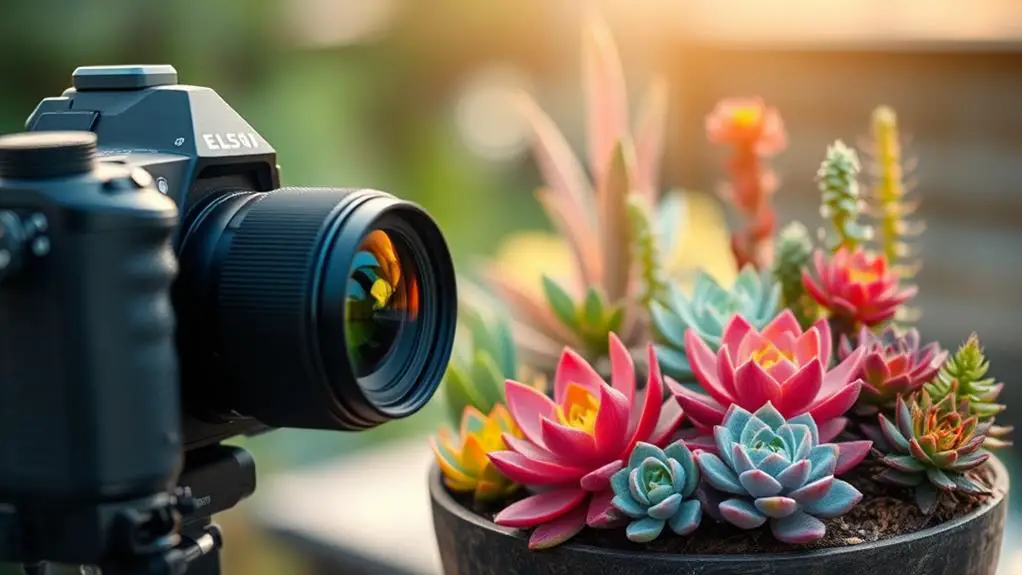
To capture the intricate beauty of succulents, selecting the right gear is paramount. The right tools can make all the difference in showcasing the unique patterns and textures of these fascinating plants. Here's what you'll need:
- Macro Lens: A 100mm macro lens is perfect for succulent photography. It allows you to get up close, capturing sharp details and creating a stunning depth of field.
- Tripod: Using a tripod is essential for stability. It helps minimize camera shake, especially when using smaller apertures, ensuring your images are crisp and clear.
- Entry-Level DSLR: Cameras like the Canon Rebel series offer great image quality and versatility. They're perfect for budding photographers who want to immerse themselves in succulent photography.
- Polarizing Filters: These filters enhance colors and reduce glare on shiny succulent surfaces, making the details pop in your photos.
Adjusting your shutter speed and aperture settings correctly is also important. A slower shutter speed can capture more light, while the right aperture will control the depth of field.
Additionally, using diffusers can soften harsh sunlight, creating even lighting conditions. With the right gear and a bit of practice, your succulent photos will be stunning!
Master Composition
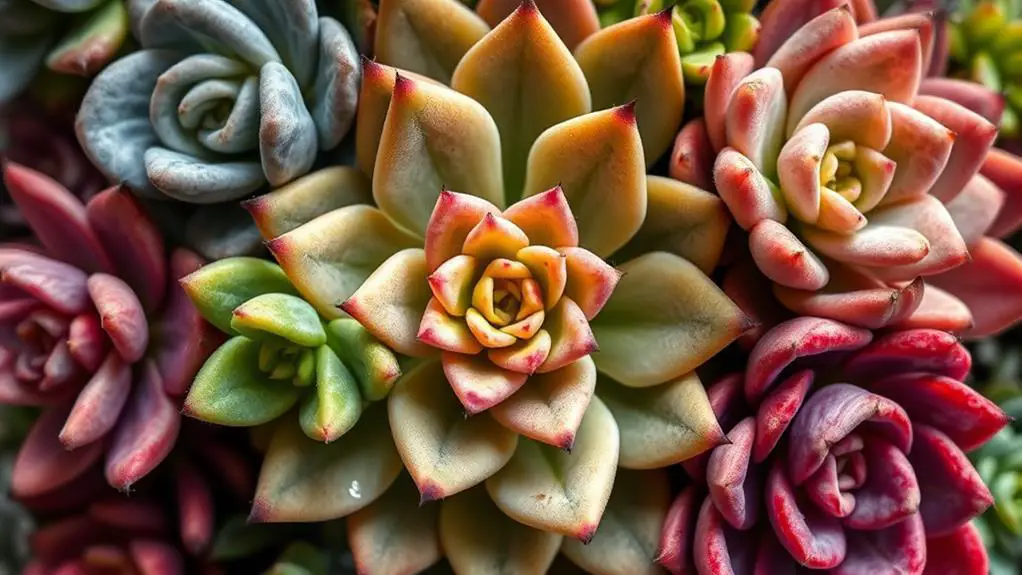
Mastering composition in succulent photography can elevate your images from ordinary to extraordinary. Start by using the rule of thirds. Imagine your frame divided into nine equal parts by two horizontal and two vertical lines. Place your succulent at any of the intersections to create a balanced and visually appealing composition.
Experiment with geometric patterns and symmetrical arrangements. Succulents often have intricate structures that naturally draw the eye. Highlight these patterns to add visual interest.
Complementary colors play a big role in making your subject pop. Choose backgrounds that contrast with the succulent's colors. This will make the succulent stand out and grab the viewer's attention.
Focus on the textures and shapes of the leaves. The unique characteristics of succulents can create compelling abstract elements in your photos. Zoom in on these details to engage your viewer's curiosity.
Don't be afraid to move around your subject. Changing angles and perspectives can dramatically alter the background dynamics. This can help eliminate distractions and lead to more compelling compositions.
Optimize Lighting
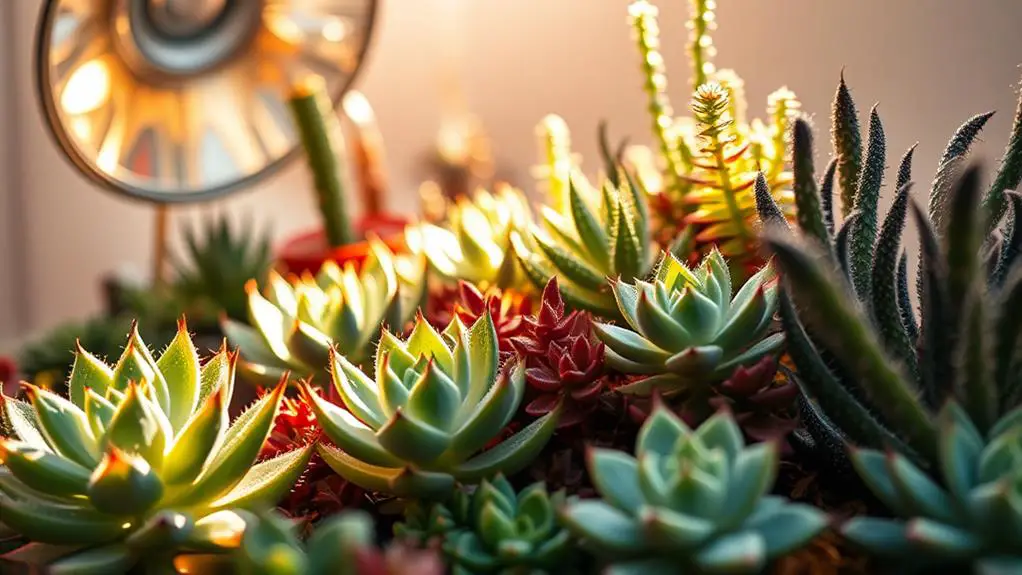
Understanding composition lays the groundwork, but lighting is what truly brings your succulent photos to life. To optimize lighting in succulent photography, focus on creating soft light and using techniques that enhance the plant's unique features without overpowering them.
- Early Morning or Late Afternoon: Aim to shoot your succulents during these times. The softer light during these hours reduces harsh shadows and high contrast, giving your photos a gentle glow.
- Side or Backlighting: This method enhances the definition and softness of the succulent's features. Side lighting creates appealing shadows, while backlighting can make the leaves glow, adding a magical touch.
- Diffusion Panels: These are handy tools for softening harsh sunlight. Place a diffusion panel between the sun and your succulent to create a gentle light shadow, perfect for close-up shots.
- Experiment with Angles: Don't hesitate to move around your subject. Slight changes in position can drastically improve the lighting effect and overall quality of your image.
Engage With the Community

Connecting with the community can considerably enrich your succulent photography journey. Engaging with the community brings many benefits, including access to photography classes and workshops. You might find local organizations, like the Desert Botanical Garden, offering courses focused on succulent photography.
These classes and workshops let you learn from experienced photographers and enhance your skills.
Sharing your succulent photos online is another great way to connect. When you share photos online, you can receive valuable feedback and connect with fellow enthusiasts. This helps you improve and feel part of a supportive community.
Joining online forums or social media groups dedicated to succulents encourages the exchange of ideas and techniques among plant photography lovers.
Subscribing to newsletters from gardening clubs can also keep you updated on photography tips, events, and exhibitions related to cacti and succulents.
This way, you'll never miss out on exciting opportunities to learn and grow.
Frequently Asked Questions
How to Photograph Succulents?
You should use a macro lens to capture details, experiment with apertures for depth, and take photos during the golden hour. Use a diffuser to soften light, and apply the rule of thirds for engaging compositions.
What Are the Best Settings for Plant Photography?
For the best plant photography settings, use a wide aperture (f/2.8-f/5.6) for background blur, low ISO (100-200) for clarity, shutter speed of 1/200 seconds, and experiment with white balance. Use a tripod for stability.
What Is the Best Light for Plant Photography?
You'll get the best light for plant photography during the golden hour, right after sunrise or before sunset. This soft, warm glow enhances your plants' colors and details, making them look more vibrant and stunning in photos.
How Do You Photograph a Cactus?
To photograph a cactus, use a macro lens for detailed close-ups. Shoot during golden hour for soft light. Experiment with angles and stabilize your camera with a tripod. A polarizing filter reduces glare and enhances colors.
Conclusion
With these tips, you're ready to capture stunning succulent photos. Remember to understand your plants, choose the right gear, master your composition, and make the most of natural light. Don't forget to connect with others who share your passion; their insights can be invaluable. Keep practicing, and you'll see your skills grow. Most importantly, have fun and enjoy the process. Happy photographing!


